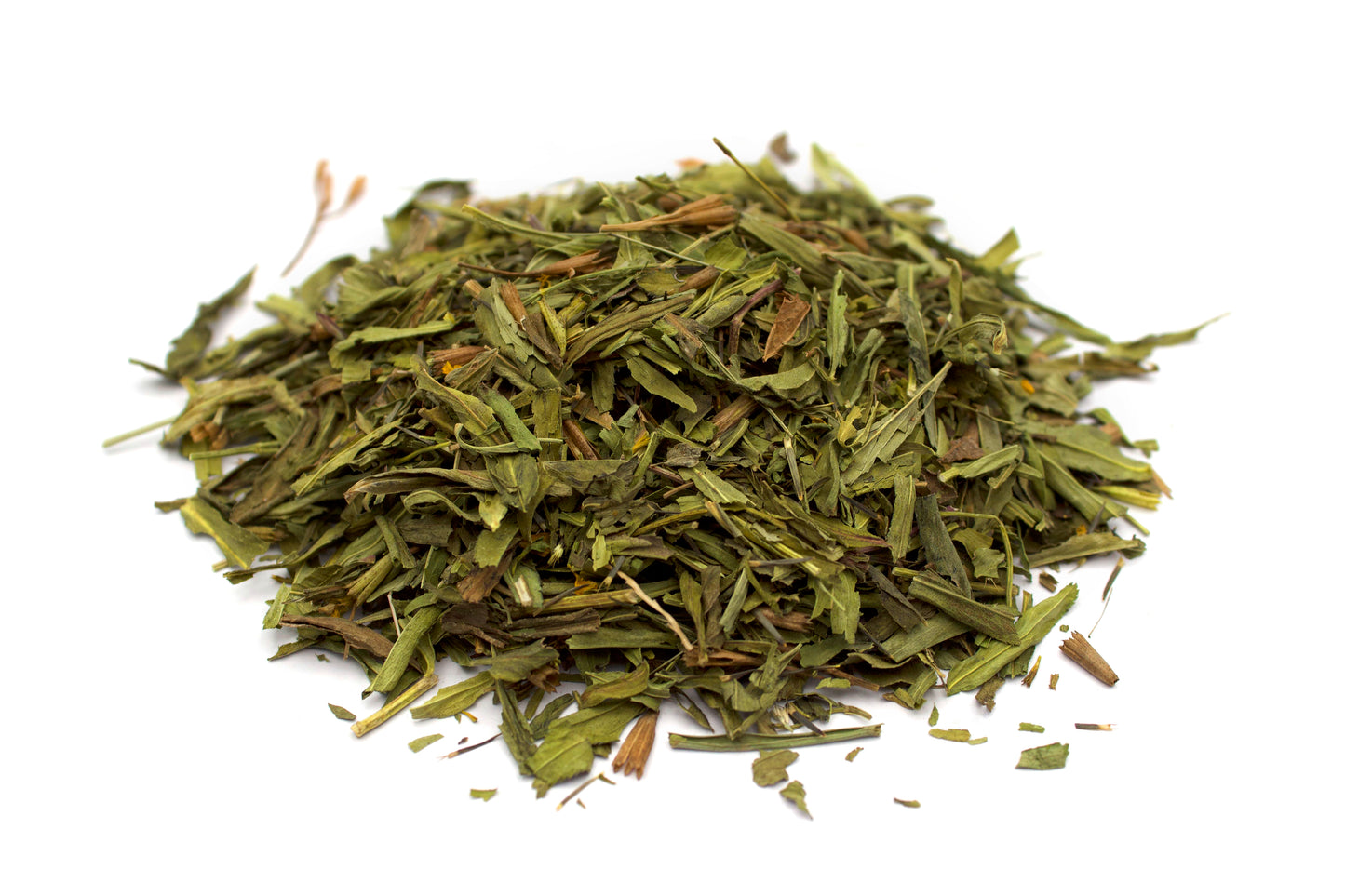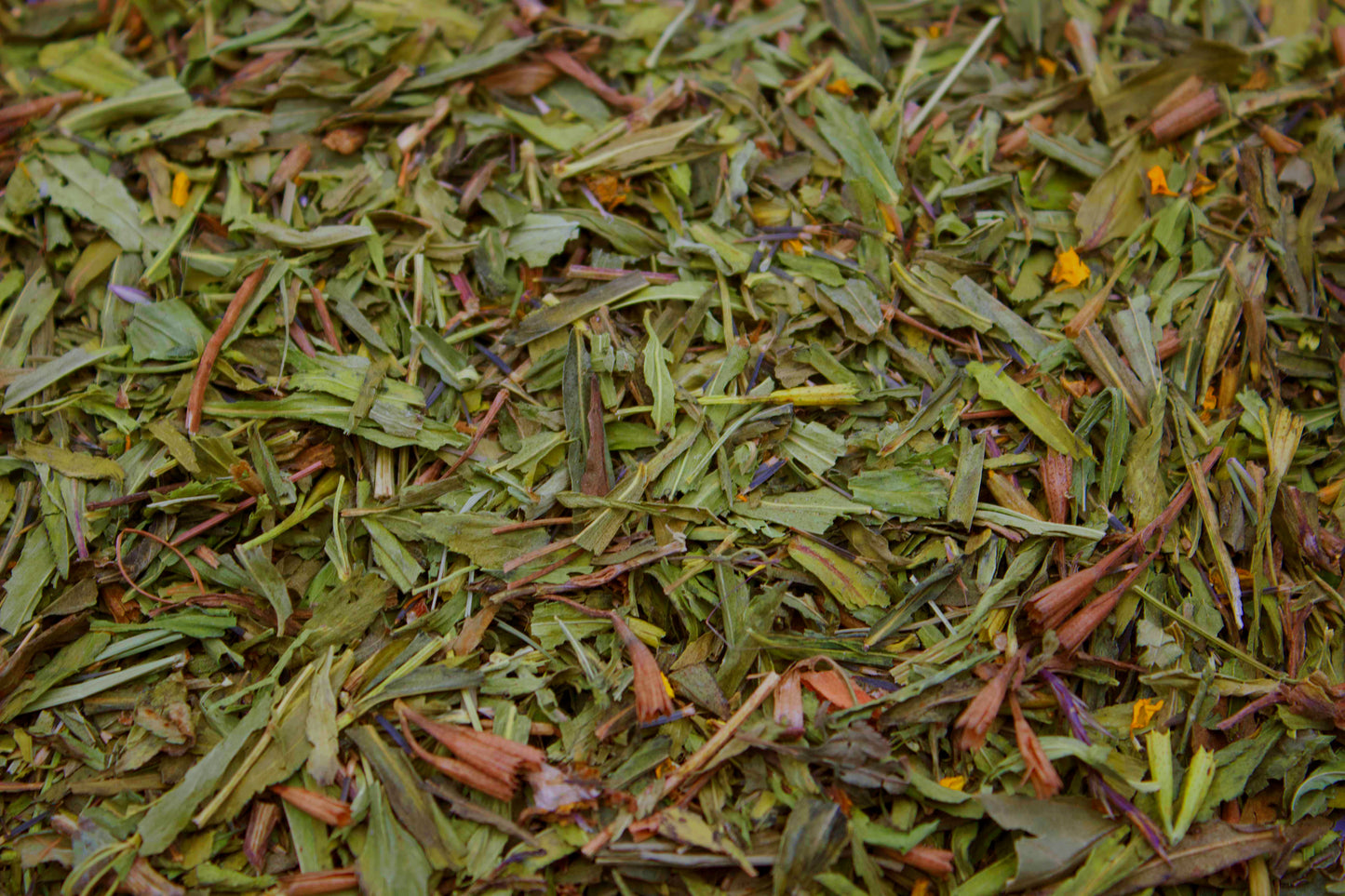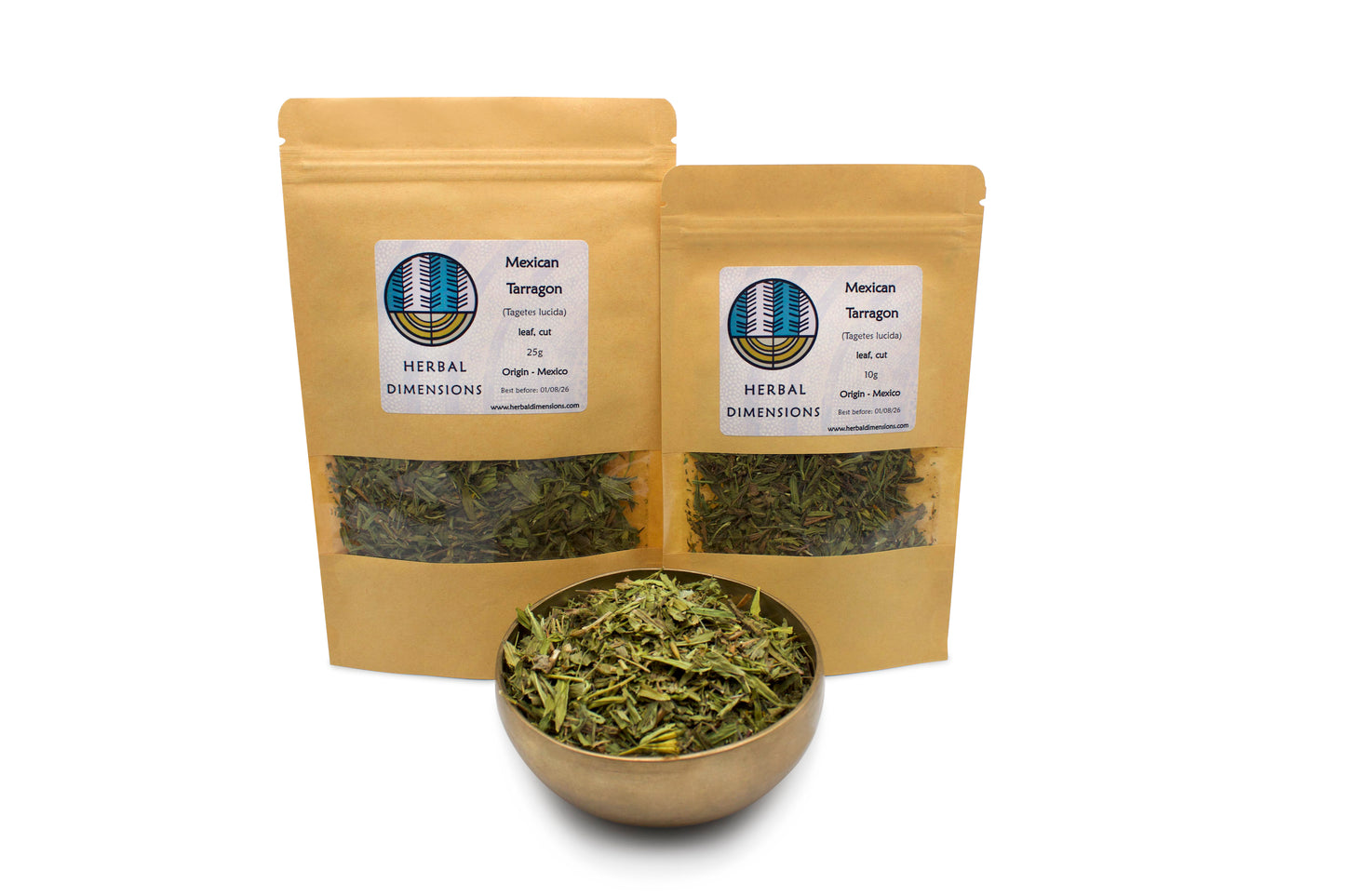Herbaldimensions.com
Mexican Tarragon (Tagetes lucida)
Mexican Tarragon (Tagetes lucida)
Couldn't load pickup availability
Share
Botanical name: Tagetes lucida
Other names: Yyauhtli, Sweetscented marigold, Mexican marigold, Mexican mint marigold, Mexican tarragon, sweet mace, Texas tarragon, pericón, yerbaniz, and hierbanís.
Family: Asteraceae
Parts used: Leaves & Flowers
Mexican Tarragon is a perennial herb and member of the daisy family (Asteraceae) and is native to Mexico. It is known for its aromatic qualities and vibrant yellow flowers. The ethnobotany of this herb is rich and there is documented use in traditional medicine, culinary practices, ritual & ceremonial use. Its scientific name, Tagetes lucida, is derived from the Latin word "lucidus," meaning bright or shining, likely referencing its golden blooms and glossy leaves.
Historically the Aztecs employed this herb in a ritual incense called Yyauhtli 'Plant of the Clouds'. The word is derived from ujana meaning to 'offer incense in sacrifice' and refers to the Aztec use of this plant in human sacrifice. The Aztec also used it as one of the ingredients added to make the drink chocolatl, which gave it a spicy flavor. Yyauhtli is closely associated with the Aztec rain god Tlaloc.
Mexican Indians have since pre columbian times attributed Tagetes species with magical properties. Bundles of the dried herbage are placed as offerings in temples, administrative buildings, and sacred sites in Mexico. Flowers of Tagetes species are often offered to the dead on the night of All Saints Day.
Tagetes lucida is used in combination with other herbs in Mexican brujería (witchcraft) in ceremonial healing rites known as limpias, or “purifications,” to dispel diseases. Today Mayan shamans use Tagetes lucida which they call xpuhuc as an inebriant and the Mixe of Oaxaca use a tea of 9 flowers the herb for divination (Lipp, 1991).
The name Tumutsali or more rarely Yyauhtli is used by the Huichol (Wixárica) who mix Tagetes lucida with Tobacco (N.rustica) calling this 'Ye' and smoke it ceremonially, often alongside peyote, tesquino or nawa (fermented maize drink) cái or sotól (cactus distillate), and tepe (another alcoholic beverage).
In traditional medicine Tagetes lucida has been used for a variety of purposes including as a digestive aid and for abdominal cramps. It is also used in baths to treat rheumatism.
Tagetes lucida has superb Anise like flavour and makes for a wonderful tea. It can be used to enliven and refresh and yet also makes a great aid for meditation, relaxation, introspection and for its oneirogenic (dream promoting) properties.






